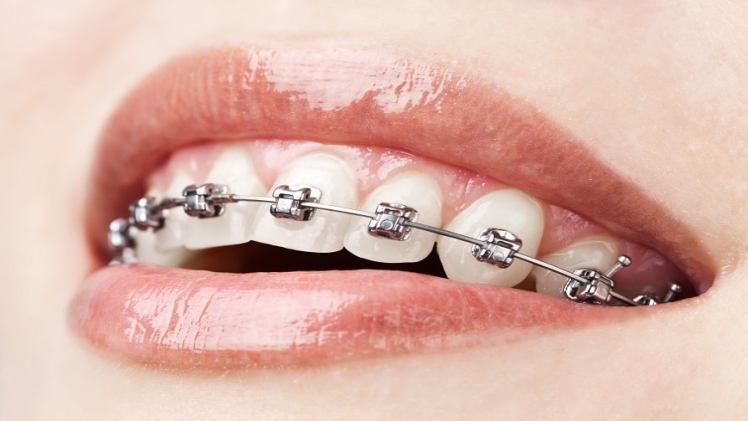The pursuit of a perfectly aligned smile has evolved significantly over the years, transforming from a conventional rite of passage involving metal braces to a modern-day journey marked by innovative solutions like Invisalign. In a world where aesthetics and functionality are both highly valued, the realm of teeth straightening has witnessed remarkable advancements. This article delves into the fascinating journey of this evolution, highlighting the transition from traditional metal braces to the revolutionary Invisalign system. For a deeper understanding, we turn to Dr. Sahil Patel, an expert from the cosmetic dental clinic MaryleboneSmileClinic, who sheds light on the history of Invisalign and its profound impact on reshaping smiles.
Invisalign: A Revolutionary Leap in Teeth Straightening
According to Dr. Sahil Patel, the concept of Invisalign emerged as a revolutionary response to the limitations and discomfort associated with traditional metal braces. In the late 1990s, as dental technology was rapidly advancing, a team of innovative minds embarked on a mission to create a more discreet, comfortable, and effective alternative to conventional braces. This mission led to the birth of Invisalign—a groundbreaking approach to teeth straightening that would not only transform the smiles of millions but also redefine the entire orthodontic experience.
The Pioneering Vision of Invisalign
In 1997, Zia Chishti and Kelsey Wirth co-founded Align Technology, the company behind Invisalign. Their vision was to revolutionize teeth straightening by replacing metal wires and brackets with a series of transparent aligners. These aligners, custom-designed for each individual, gradually guide teeth into their desired positions without the need for the traditional wires and brackets. This pioneering approach aimed to not only enhance the effectiveness of teeth straightening but also improve the overall experience for patients, making the journey to a perfect smile more convenient and comfortable than ever before.
The Innovation Process
Sahil Patel elaborates that the development of Invisalign involved cutting-edge technology, including computer-aided design (CAD) and 3D printing. The process begins with a detailed digital scan of the patient’s teeth, allowing for the creation of a highly precise and personalized treatment plan. A series of custom aligners is then produced using advanced 3D printing techniques. Each aligner is designed to be worn for a specific duration, gently and gradually shifting the teeth into alignment, a process that is tailored to the unique needs of each patient.
The Invisalign Experience
One of the most revolutionary aspects of Invisalign is its discreet nature. Since the aligners are made of clear, smooth plastic, they are almost undetectable when worn. This discretion addresses a common concern of individuals who may be hesitant to wear traditional braces due to their noticeable appearance. Additionally, Invisalign aligners are removable, allowing wearers to enjoy their favorite foods without the restrictions posed by metal braces. This removable feature also simplifies oral hygiene routines, as wearers can brush and floss their teeth as they normally would.
The Impact on Teeth Straightening
In the years following its introduction, Invisalign rapidly gained popularity, reshaping the teeth straightening landscape. Sahil Patel highlights that Invisalign’s success isn’t solely attributed to its aesthetic appeal. The technology and precision behind each aligner have also proven highly effective in achieving desired results. From mild to moderate orthodontic issues, Invisalign has demonstrated its ability to address a wide range of cases, providing patients with tailored solutions that fit their lifestyles while minimizing discomfort.
The Journey Continues
Over the years, Invisalign has continued to evolve, reflecting the commitment of Align Technology to ongoing research and innovation. The introduction of features like “SmartTrack” material and “SmartForce” attachments has enhanced the efficiency of the aligners, ensuring more predictable and faster results. Additionally, the advent of digital treatment planning has further streamlined the process, allowing for even greater precision and customization.
Conclusion
The evolution of teeth straightening, from the days of metal braces to the advent of Invisalign, is a testament to the relentless pursuit of innovation and excellence within the field of dentistry. Invisalign’s inception not only transformed smiles but also revolutionized the entire experience of teeth straightening. From its discreet appearance to its customized approach and use of cutting-edge technology, Invisalign has redefined how individuals achieve beautifully aligned smiles. As the journey of teeth straightening continues to evolve, Invisalign remains at the forefront, reflecting the seamless fusion of aesthetics, technology, and patient-centric care that has become the hallmark of modern dentistry. In a world where confidence is closely intertwined with appearances, Invisalign has empowered individuals to embrace their journeys to straighter, more radiant smiles with newfound ease and confidence, marking a remarkable chapter in the ongoing evolution of dental care.

